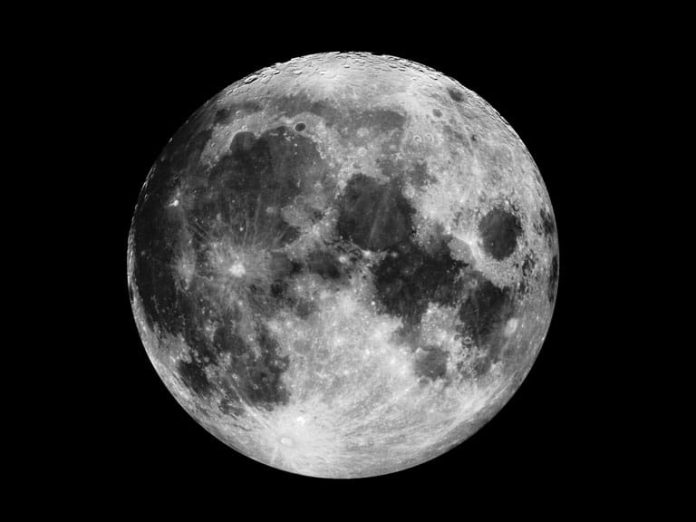For anyone with memories of the Apollo Moon programme at its thrilling height, one of the saddest, yet most intriguing, pilgrimages in the world is to a little-known museum on Long Island, near New York City.
There, at the Cradle of Aviation Museum, they display one of the Apollo Lunar Modules – the landing craft from which astronauts on the six manned American Moon landings from 1969 to 1972 stepped onto the Lunar surface.
Not that unusual, you may think – there’s a convincing replica of one in London’s Science Museum. But the exhibit on Long Island is the real spacecraft that was to have flown on the Apollo 18 mission. But for a decision by the US Congress to end the Apollo programme, it would have gone to the Moon.
As it is, the last Lunar Module to land, Apollo 17’s, blasted off from the Moon 50 years ago this 14 December, with Gene Cernan the final man up the ladder, and no human has been back since.
There were many reasons for abandoning Apollo. For one, the expenditure was seen as unsustainable – the programme accounted for 4% of the USA’s federal spending and had cost more than £228 billion in today’s money – more than the GDP of dozens of countries.
There was also a palpable sense among politicians, the public and the media, of ‘been there, done that’. President Kennedy’s ambitious target of landing astronauts on the Moon before the end of the 1960s had been met, and the Soviets had been put in their place 12 years after launching Sputnik 1.
‘It’s a well-established pattern to “discover” a territory “because it’s there”, then, generations later, to revisit with a purpose’
Yet half a century on, something unexpected is happening; humankind is once again ‘go for landing’ on the Moon. Non-manned missions by several countries have either launched or are scheduled for the next few years. Launch dates are famously flexible, but by the time you read this, South Korea should have launched its Pathfinder lunar orbiter, while in September, Russia’s Roscosmos hopes its Luna 25 lander will land near the lunar South Pole. In October, a Japanese private company plans to launch a lander, Hakuto-R, with a 10kg robotic rover vehicle on board built by the United Arab Emirates and called Rashid.
Then some time next year, the first Moon tourists will fly around it in an Elon Musk SpaceX Starship, the mission paid for by its billionaire passenger, Japanese fashion mogul and art collector Yusaku Maezawa. Also in 2023, Japan’s space agency Jaxa plans to land its SLIM – Smart Lander for Investigating the Moon – and next year will also see Australian and Dutch lunar spacecraft.
Most surprisingly of all, American astronauts are due to land on the Moon again, in a new programme called Artemis – Apollo’s twin sister in Greek mythology. An initiative of President Trump, Artemis’s first landing date was to be 2024, but it is now expected to happen around 2026.
So, why are we making a return to the Moon the next giant leap for mankind?
It’s a well-established pattern to first ‘discover’ a new territory ‘because it’s there’, then, generations later, to revisit with a purpose. It happened with Antarctica, where coincidentally, there was also a 50-year gap between the initial adventure and the more purposeful establishment of bases. And in America too, albeit with a longer interlude between Columbus and the first European colonists.
A key difference between 1972 and now is the emergence of tech tycoons such as Musk and Jeff Bezos. As NASA’s resources have shrunk to 10% of their peak, these privateers’ wealth, power, ambition, and some might say arrogance, has grown. And of course, there’s the simultaneous emergence of countries, particularly China, which were impoverished when Gene Cernan left the last footprint in the lunar dust. One can only imagine the hoo-ha there will be when China lands its taikonauts on the Moon, as is expected this decade.
Another reason for the rekindled interest is that it serves as a scientific training ground for the vastly tougher challenge of colonising Mars, which many regard as essential for the continuance of human life; ‘I want to die on Mars, just not on impact,’ as Elon Musk likes to say. He also speaks of the need for humans to become ‘an interplanetary species’. Scientists want to find how easy it is to use the water on the Moon, originally detected by an Indian orbiting craft, and how to deal with radiation dangers on places without an atmosphere.
‘Next year, moon tourists will fly around it in Elon Musk’s SpaceX Starship, funded by a Japanese billionaire passenger’
The final, and perhaps most important, reason for returning is to use it as a glorified industrial park where humans can, and most likely will, make as much mess and pollution as they like in the extraction of rare resources. Since there’s no life, the thinking seems to be, there’s nothing to pollute or kill off.
Ironically, the Moon could provide, at a cost to its pristine current state, the rare earth metals we need to make the hardware necessary for a cleaner planet – the electric vehicles, solar panels, wind farms and so on. One such is neodymium, which is used in the magnets essential for electric motors and is notoriously polluting to extract on Earth.
Other useful metals which seem to exist on the Moon include titanium, beryllium, lithium, zirconium, niobium and tantalum.
Then there’s another substance we might be hearing a lot about in coming decades – helium-3. Nuclear fusion, the energy supply that could one day make fossil fuels obsolete, needs this isotope of helium. Helium-3 is so rare on Earth, it costs $1m a kilo. Some estimates suggest it’s relatively plentiful on the Moon, if we could learn how to mine it and get it back to Earth. ‘However, extracting helium-3 involves opencast mining on quite a big scale,’ points out renowned physicist and Astronomer Royal, Lord Rees.
One of the great lunar issues to be resolved over coming decades is whether humans are even necessary any more in space, or whether robots are a more cost-effective, if less glamorous, way of exploring and exploiting hostile environments. Dhara Patel, one of the British National Space Centre’s resident experts, argues that humans are more agile than even the most modern, AI-based robots. ‘With crewed space exploration you can achieve so much more in a shorter time,’ she says. ‘The Apollo astronauts were able to conduct mountains of scientific research in the few days they were on the Moon compared to the weeks or months that it would take for robotic spacecraft to do the same. And it inspires the next generation, which we need going forward.’
Lord Rees is more pro-robot. ‘Robots and rovers are getting better at exploring and more intelligent all the time,’ he says. ‘We can send them further, and use them for building things on the Moon, and fabricating large solar energy collectors in space. The case for humans is getting ever weaker.
‘Ironically, the Moon could provide rare earth metals we need to make the hardware necessary for a cleaner planet’
‘The cost gap is huge and I don’t think taxpayers should be spending anything on human spaceflight. But if billionaires or companies want to do it, that’s fine – the 2% failure rate that exists in space exploration is acceptable to the adventurous.’
However, he is sceptical about the prospects for Moon tourism. The idea of the Apollo 11 landing site becoming the new Pyramids for the unfeasibly rich, he sees as unlikely. He concedes, however, that Apollo 8-style Moon orbital tourist trips are doable, such as Yusaku Maezawa’s SpaceX flight next year.
Some argue there’s another impetus for returning to the Moon with crewed missions.
Twelve people have walked on the Moon, of whom, at the time of writing, four are still alive, aged 86 to 92. All of the 12 have been men, all American, all Midwesterners. Eleven of them, amusingly, were boy scouts.
So Moonwalkers to date aren’t a very diverse bunch. Obviously, Chinese taikonauts, and maybe Indian crews, will change that. But in the meantime, NASA’s website says tellingly, ‘With Artemis missions, NASA will land the first woman and first person of colour on the Moon.’
Democratising the Moon, then, is a priority for the US, and while some may see that as the extension of political correctness into space, many will see it as a good – even a great – thing for human society as a whole.
Did you know
- We always see the same side of the Moon from Earth.
- It takes 27 days for the Moon to travel around the Earth.
- The average daytime temperature is 107C, falling to -153C at night.
- In 1970 Helbros launched a ‘moon watch’ to tell the time on the Moon in ‘lunours’ and decilunours. It was never a big seller.
- The Moon’s diameter is 2,159 miles, a quarter the size of Earth.
- It’s drifting 3.8cm away from us every year.
- The vast, dark regions you can see from Earth are smooth lava beds called maria or seas.
- 382kg of Moon rock and ‘soil’ were brought back by Apollo missions.
Check out the Moon’s live position at solarsystem.nasa.gov/moons/earths-moon/overview
Subscribe today for just £29 for 12 issues…













